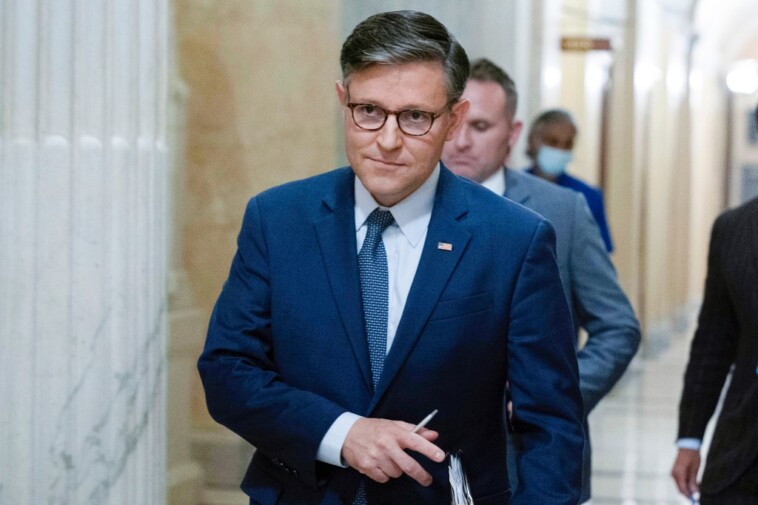House Republican leadership on Sunday unveiled its second plan to avert a government shutdown, opting to ditch a key provision from the first attempt that Democrats had roundly opposed.
The House GOP leadership’s new plan punts the government funding fight past the presidential election to right before Congress breaks for Christmas, keeping spending at current levels until Dec. 20.
Speaker Mike Johnson (R-La.) had previously championed a longer, six-month continuing resolution to keep the government funded through March 28. His original plan paired a spending patch with the Safeguard American Voter Eligibility (SAVE) Act, which requires votes to show proof of citizenship to cast their ballots.
Democrats had dubbed the SAVE Act a nonstarter and the first plan failed on the House floor last week.

“While this is not the solution any of us prefer, it is the most prudent path forward under the present circumstances, Johnson wrote in a letter to colleagues. “As history has taught and current polling affirms, shutting the government down less than 40 days from a fateful election would be an act of political malpractice.”
A vote on Johnson’s plan B to forestall a shutdown could come as soon as Wednesday. The bill also includes over $231 million for the Secret Service.
Fourteen House Republicans joined a majority of Democrats to vote down that original CR last Wednesday.
Former President Donald Trump had implored Republicans to stick by the SAVE Act even if doing so would lead to a standoff that triggers a government shutdown.
GOP leaders had been keen on avoiding a potentially politically damaging shutdown before the Nov. 5 election and avert Congress’ near perennial holiday spending fight.
But members of the House Republican Conference lashed out against the original CR, eager to get more ironclad concessions from Democrats, particularly on spending levels.
Even if the original CR cleared the lower chamber, it would’ve faced stiff opposition from the Democratic-controlled Senate and White House.

“Democrats will collectively evaluate the spending legislation in its entirety in advance of its consideration on the Floor. Congress is now on a bipartisan path to avoid a government shutdown,” House Minority Leader Hakeem Jeffries (D-NY) said in a statement about the new CR plan.
Congress has a deadline of Sept. 30 at midnight to keep the government’s lights on and stave off a shutdown.
This is because every new fiscal year, which starts on Oct. 1, Congress is tasked with funding the government. Under the normal process, Congress does so via 12 appropriations bills that are usually packaged together. But when Congress opts to buy more time, it uses a stopgap CR measure.
The spending flap marks a key test for Johnson. Strife over government funding led to the downfall of his predecessor, former House Speaker Kevin McCarthy (R-Calif.) last fall.
Already, a handful of Republican hardliners have railed against Johnson over his plan to fund the government.
Johnson survived a motion to vacate the chair — oust him — from Rep. Marjorie Taylor Greene (R-Ga.) back in May after he brought up a bill to replenish aid to war-torn Ukraine. Democrats threw him a lifeline.
But Democrats have not committed to bailing him out in the future should Republicans in the lower chamber opt for another mutiny. Beyond that, Johnson is at risk of a tough battle to hold onto his leadership post during the next term of Congress, due to Republican infighting.
The House of Representatives is scheduled to break for recess by the end of this week, though that can be changed.


